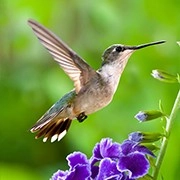Winged Architects

Small birds renowned for their graceful flight and distinctive nesting habits, Swallows have garnered cultural significance across many human societies, often symbolizing luck and garnering fascination for their tendency to build nests on human structures.
However, while it is true that swallows frequently nest within human towers, they also exhibit nesting behaviors in natural environments, albeit less observable.
This article delves into the nuances of swallows' nest selection and the underlying motivations behind their choices.
Firstly, let us delve into why swallows prefer nesting within human structures. Human constructions offer swallows a relatively secure and stable habitat.
Tall buildings, eaves, and rooftops serve as optimal nesting sites, shielding them from adverse weather conditions such as wind and rain and often keeping them out of reach of ground predators.
In the vast ocean, sea turtles face grave threats, but concerted conservation efforts are crucial for their survival.
Whales, mysterious giants of the ocean, astound with their prolonged underwater stays. Delve into their secrets of survival.
Bat falcons are the fastest, agile predators that feast on bats and insects, communicating through screeches.
Discover the hidden world of deer sleep, where mystery and majesty intertwine in the silent forest ballet.
Cheetah cubs are vulnerable, by mimicking honey badgers increasing their chances of survival in the wild.
Cat language: Understanding what your cat is trying to tell you.
Furthermore, human activities inadvertently provide swallows with abundant food sources, particularly in urban areas where insect populations thrive.
Thus, the environment afforded by human structures presents swallows with safety and convenience, thus explaining their inclination towards nesting in such locations.
However, despite the prevalence of nesting within human structures, swallows have also been observed nesting in the wild. One primary reason for this behavior is the search for suitable habitats.
Certain swallow species prefer nesting in caves, cliffs, or trees over human constructions. These natural habitats offer swallows shelters that align more closely with their natural ecological preferences.
Additionally, nesting in the wild may also be driven by the impact of human activities, such as deforestation or development, which disrupt natural habitats, compelling swallows to seek alternative nesting sites.

Another contributing factor to the scarcity of observed swallow nests in the wild is the difficulty of observation. Unlike human structures, natural habitats tend to be expansive and inaccessible to humans.
Swallow nests may be situated deep within dense forests, mountainous terrain, or around wetlands, rendering them challenging to locate and observe directly.
Consequently, while swallows nest in the wild, the limited opportunities for direct observation have led to misconceptions regarding their nesting habits in natural environments.
Furthermore, the migratory habits of swallows also influence their nesting behaviors. Many swallow species nest in safer locales during their seasonal migrations, often favoring natural environments away from human disturbances.
Consequently, while swallows may nest in the wild during migration seasons, these nests are frequently abandoned post-migration, contributing to the relatively low number of observed swallow nests in natural settings.
In summary, while swallows prefer nesting within human structures, instances of nesting in the wild are also documented. Various factors, including habitat characteristics, human activities, and migratory behaviors, influence the selection of nesting sites among swallows.
The limited direct observation of swallow nests in natural habitats does not negate their existence; instead, it underscores the need for further research and observation to gain deeper insights into the ecological behaviors of swallows in the wild, facilitating better conservation efforts for these captivating avian species.

 · Animal Team
· Animal Team